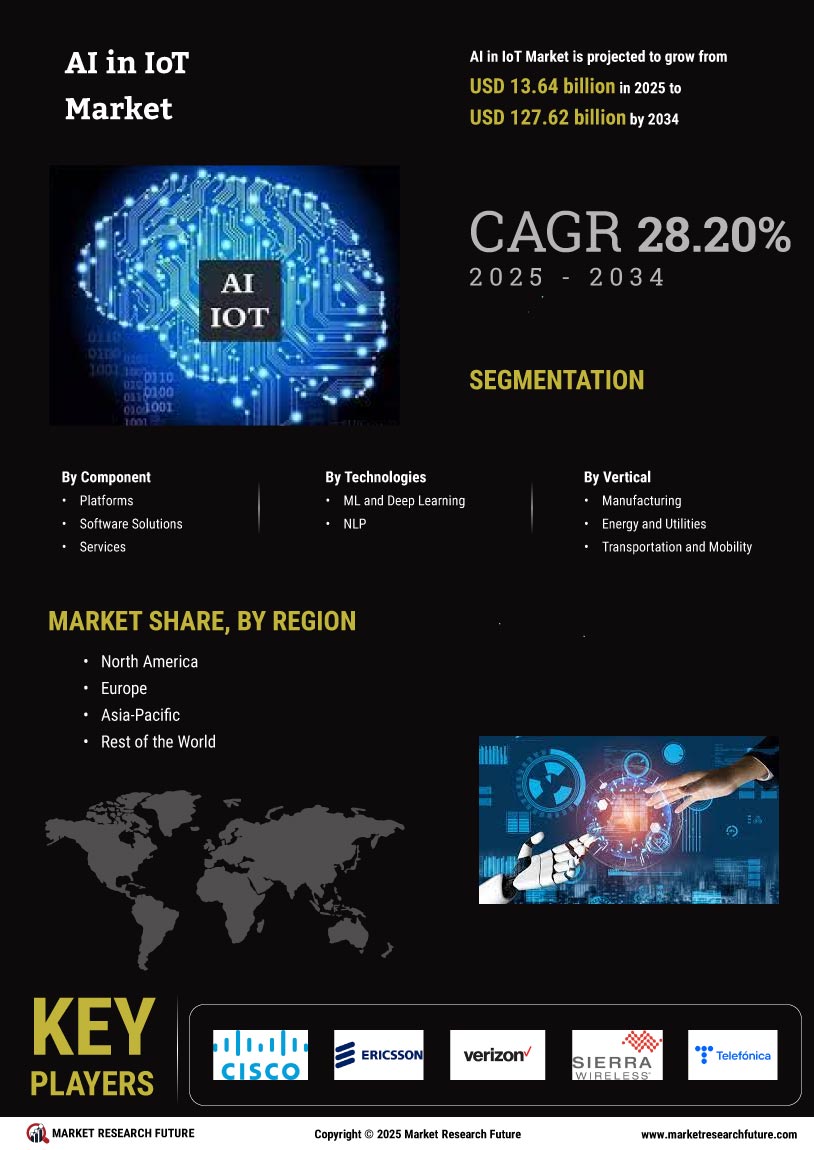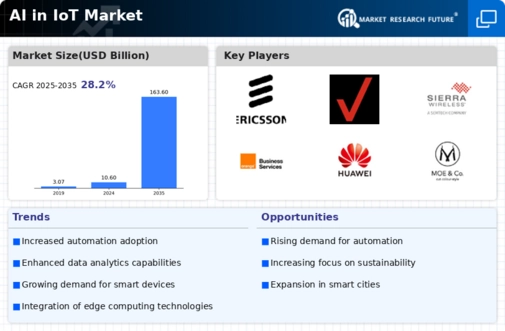Leading market players are investing heavily in research and development in order to expand their product lines, which will help the AI in IoT market, grow even more. Market participants are also undertaking a variety of strategic activities to expand their global footprint, with important market developments including new product launches, contractual agreements, mergers and acquisitions, higher investments, and collaboration with other organizations. To expand and survive in a more competitive and rising market climate, AI in IoT industry must offer cost-effective items.
Manufacturing locally to minimize operational costs is one of the key business tactics used by manufacturers in the global AI in IoT industry to benefit clients and increase the market sector. In recent years, the AI in IoT industry has offered some of the most significant advantages to medicine. Major players in the AI in IoT market, including Cisco Systems, Inc., Verizon, Ericsson, Sierra Wireless, Orange Business Services, Telefónica, Huawei, Moeco, Telit, and Hologram, are attempting to increase market demand by investing in research and development operations.
Microsoft Corp. (Microsoft) offers a variety of software-related services, including development, licencing, and support. The company offers a wide range of server applications, desktop and server administration tools, video games, cross-device productivity tools, business solution tools, and operating systems. It also offers training and certification services. It also develops, manufactures, and sells hardware products like PCs, tablets, game consoles, and other cutting-edge technology.
The company offers a wide range of services, such as consultancy, cloud-based solutions, and solution support. Through original equipment manufacturers, distributors, resellers, online marketplaces, Microsoft stores, and other partner channels, Microsoft promotes, distributes, and sells its products. The company has operations throughout the Middle East, Africa, the Americas, Europe, and Asia-Pacific. Microsoft's main office is in Redmond, Washington, in the United States. Microsoft announced pre-orders for the Surface Laptop 5 and Surface Pro 9 in November 2022.
With this, the firm unveiled its vision for the next iteration of the Windows PC, one in which the PC and the cloud merge and make use of cutting-edge AI technologies to enable novel experiences.
A subsidiary of Amazon.com, Inc., Amazon Web Services Inc (AWS) offers cloud computing services. In addition to computing, storage, databases, networking, analytics, mobile, developer tools, augmented reality, virtual reality, robotics, game tech, machine learning, management tools, content delivery, media services, customer engagement, app streaming, and security, identity, and compliance, the company also provides a wide range of cloud infrastructure services.
AWS serves a wide variety of industries, including the automotive, digital marketing, telecommunications, education, government, retail, financial services, media and entertainment, gaming, consumer packaged goods (CPG), health and life sciences, oil and gas, power and utilities, and non-profit sectors. In November 2022, AWS IoT Core announced the introduction of AWS IoT Core Device Location. Utilising location information from IoT devices, such as latitude and longitude coordinates, this new functionality enables users to track and control them.

















